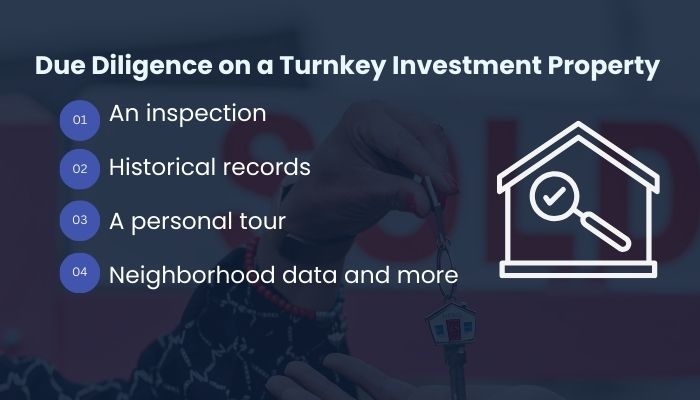Real estate investors of all shapes and sizes lust after turnkey properties.
Maybe that’s an exaggeration.
But suffice it to say, turnkey properties have a lot to offer. They’re simple, they’re convenient, and they can help you start generating passive income almost immediately once you purchase them.
The trouble is, some properties are marketed as turnkey, even though they’re not truly ready to be rented.
So how can you determine whether a property is truly turnkey? And how can you be sure that it’s a good fit for your portfolio?
Contents
The Tenuous Description of “Turnkey” Properties
In case you aren’t familiar, a turnkey property is ostensibly one that’s ready to be rented immediately. After closing the deal, you should be able to start marketing the property, attracting tenants, and generating income.
A turnkey property is all but guaranteed to be in better shape than an as is property, as most sellers are smart enough not to engage in fraud or egregiously misleading of property descriptions. When you see a property listed as turnkey, you can have some degree of confidence that it’s not going to be in shambles.
However, “turnkey” means different things to different people. If you want evidence of this, start browsing through apartments and housing units for rent in your local area. You’ll probably see some that are in pristine condition, offering veritable luxuries for prospective tenants. Others will be one or two steps above a state of disrepair, with visible defects and blemishes – and probably even more issues lurking beneath the surface. And of course, there are many properties in between.
Your standards for what qualifies as a property ready to rent are going to be somewhat unique to you. Because of this, we can’t really give advice on what qualifies as an objectively turnkey property. However, we can guide you to evaluating properties to make sure they adhere to your specific “turnkey” standards – and thereby ensure that each new turnkey addition to your portfolio is worth making.
The Importance of Due Diligence
Unless you’re obscenely wealthy or feeling extremely lucky, you probably wouldn’t buy a property sight unseen just because some stranger on the street told you it was a good one. Similarly, you can’t jump on a property just because it was described as turnkey in a public listing.
It’s your responsibility to practice due diligence and verify that this property has all the qualities and characteristics that you need in your new acquisitions.
Tools for Due Diligence on a Turnkey Investment Property
How are you supposed to practice that due diligence?
These are some of your best tools and resources:

- An inspection. Except for very rare instances, you should never waive an inspection. A home inspection is your best opportunity to investigate the property, inside and out, and detail any little issues that might be affecting it. A home inspection doesn’t take much time and costs very little, but it could save you from buying a property with massive hidden issues.
- Historical records. Historical records can also be valuable in your approach to assessing the property in question. Dig deep to figure out how this property has been used in the past, things that have happened in or around this property, and records associated with repairs, renovations, and even maintenance.
- A personal tour. One of the advantages of investing in turnkey properties over REITs is that you’ll have the opportunity to explore the properties yourself. If you have the opportunity, visit the property in person to make sure it matches the quality of the photos and descriptions you’ve read online, assuming that’s where you learned of the property in the first place.
- Neighborhood data and more. The property itself may be ready to rent, but you need to make sure it’s in a neighborhood worth investing in. Accordingly, you should do some research on the surrounding area, including similar property values, rent prices, crime rates, school quality, and more.
Important Things to Check in Any Turnkey Property
In using these tools and resources, as well as others, be sure to investigate the following:
- The numbers. Before you do anything else, you need to crunch the numbers. A property is only worth considering adding to your portfolio if it’s going to return a net profit. Depending on your goals, you may be more interested in immediately profitable monthly rental income or long-term gains through appreciation. Either way, you need to make sure that the price for this property is worth paying. Such calculations warrant an article of their own, but suffice it to say, if the property doesn’t hold up to close financial scrutiny, it doesn’t really matter whether it’s turnkey or not; it’s not worth investing in even if it’s in great shape and absolutely beautiful.
- The structure. Together with your home inspector, take a close look at the structure of the house. Is the foundation solid and reliable? Does it seem like the home was constructed effectively? Are there any major issues with load bearing elements? Structural problems are among the most expensive to fix, so even relatively minor structural defects should give you cause for concern. Sometimes, rental property renovators spend too much attention on aesthetics and not enough attention on these foundational aspects, so look closely.
- The electrical work. You should also take a look into the electrical work within the home. Is all the wiring up to code? Modern electrical work is practically necessary to support modern appliances and contemporary daily needs. Electrical fire risks are also a consideration; if the wiring is sufficiently old or insufficient for how electricity is used within the home, it could increase the risk of a destructive fire.
- The HVAC system. Inspect and evaluate the HVAC system as well. The heater and air conditioner are probably functional if the property is being marketed as turnkey, but when were they purchased? How have they been maintained? What is the ventilation system like and when was the last time it was cleaned? If you want tenants to be happy with your property, the bare minimum isn’t enough; you need to make sure these systems are appropriate and working at full capacity.
- The plumbing. Similarly, you should look into the plumbing. Is everything up to code? Do all sinks and faucets work and do all the drains drain properly? Are there any issues with old or improperly maintained plumbing elements? A superficial facelift in the kitchen or bathroom may mask deeper plumbing problems if you’re not careful.
- The appliances. What types of appliances are available in this property? Ideally, your turnkey property will already have a working refrigerator, stove, oven, dishwasher, and potentially even a washer and dryer. Tenants need certain appliances and typically desire others, so it’s important to make sure these appliances are relatively new, in proper working condition, and accessible.
- The interior. Take a tour throughout the entire indoor area of the property. Make a note of anything that might stop you from living in this property; for example, do you notice any major flaws or defects in the carpeting, on the walls, on the stairs, or in any of the livable areas of the home? Is there anything that would seem like a red flag to you if you put yourself in the prospective tenants’ shoes? Trivial defects certainly aren’t dealbreakers, but they should factor into your equations.
- The exterior. Also tour the outside of the property. Again, look for any flaws or defects that might give you cause for concern as a prospective tenant. Although your tenants are probably going to spend most of their time indoors, the exterior of the home is going to be responsible for their first impressions, so it’s important to get right.
- The yard. In line with this, walk around the yard and make sure the landscaping is in proper order. Depending on the nature of the property and the types of tenants you want to attract, aesthetically beautiful landscaping may or may not be a major priority. However, the property should look respectable – and make tenants feel comfortable living there.
- The fixtures. Real estate sellers marketing their properties as turnkey typically spends some time and money upgrading the fixtures. Light fixtures, doorknobs, faucets, and the like are minor touches, but collectively, they can make the entire property seem newer and more inviting. Again, these aren’t really dealbreakers; you can always purchase and install your own fixtures if you want to change them out. However, they may compromise the turnkey nature of the property.
- Legal compliance. In line with some of the other points we’ve made, it’s important to ensure legal compliance. Together with your real estate lawyer, you should review all the laws and regulations that might apply to you and your property. For example, is everything up to code? Is there an available fire escape? Is the property fully habitable in every sense of the word?
- The history. Review the history of the property, to whatever extent you can. You can look through online records, ask for details from previous owners, and search through renovation documentation to get a better sense of how this property was owned used and managed in the past. You might be surprised to learn about previous issues with how this property has been utilized.
- The surrounding area. Finally, thoroughly evaluate the surrounding area. At this point, you probably have a good idea of whether or not this property is immediately habitable. But even the best turnkey properties may not be worth investing in if they exist in sketchy neighborhoods with minimal potential upside in the long term.
Ultimately, it’s your call whether the property in question is turnkey enough for your standards – and whether it’s a worthy addition to your portfolio for the price it’s being listed at. Building a real estate empire one turnkey property at a time is a challenging and long-term endeavor, but with ample diligence and the right level of support, you can make it work for you.
Are you interested in taking your first step?
Reach out to us for a free consultation today!
- 10 Reasons for Optimism in the U.S. Housing Market (and Compelling Counters) - December 10, 2024
- Is This Real Estate Property Truly Turnkey? 13 Things to Check - November 8, 2024
- Are “As Is” Properties Worth Considering as a Real Estate Investor? - October 28, 2024

